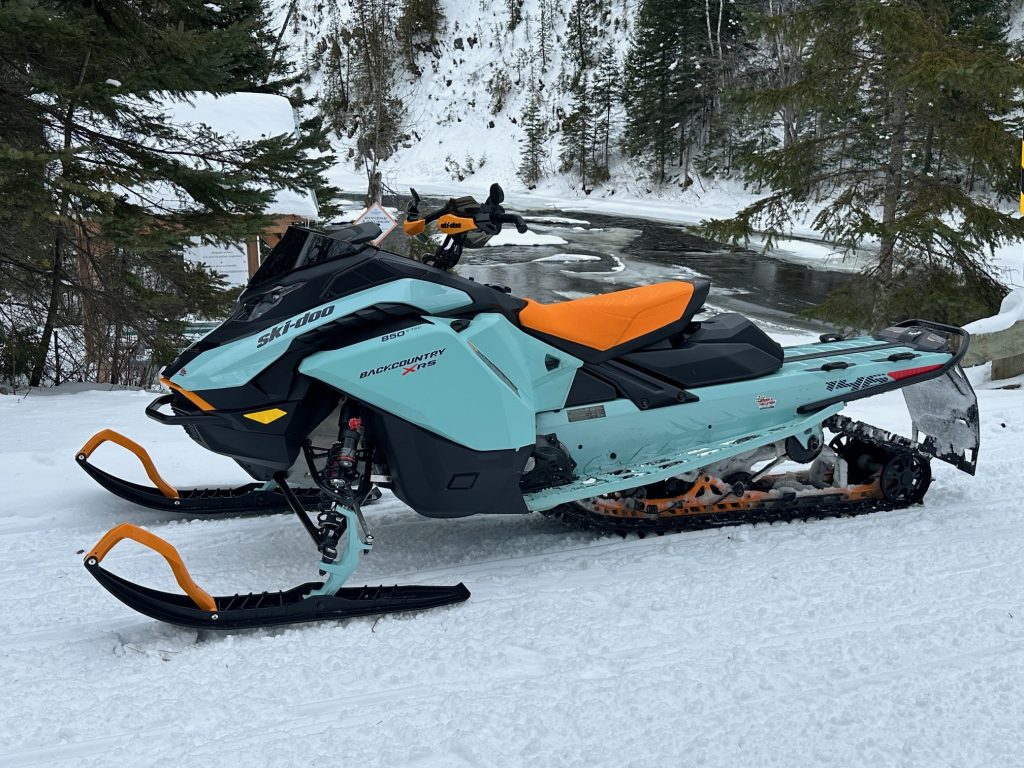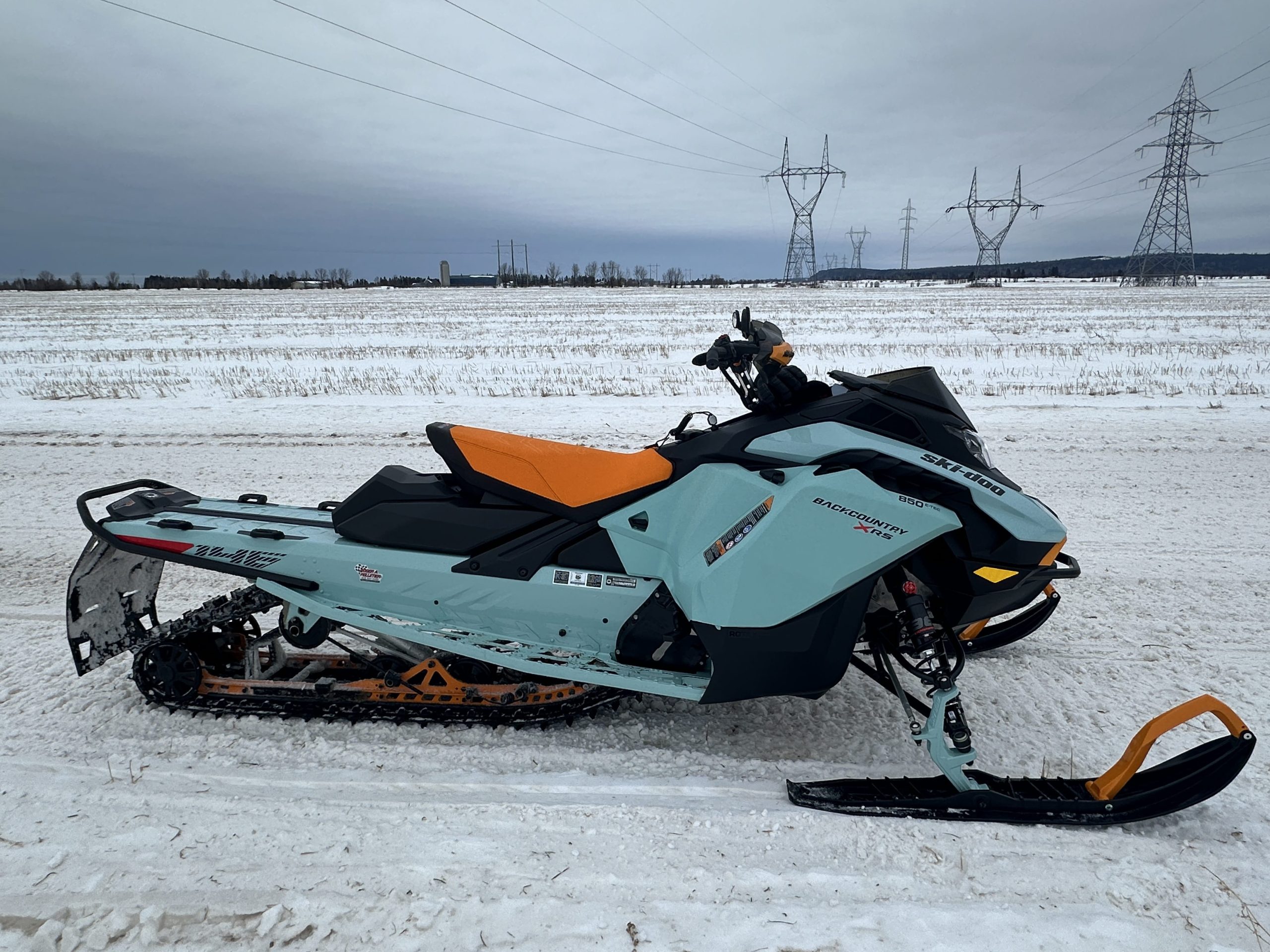Table of contents
Toggle- The Pragmatic Design of the 2024 Backcountry X-RS
- General Mechanics of the Vehicle
- Innovative Screen and Improved Ergonomics of the 2024 Backcountry X-RS
- Trail Behaviour of the 2024 Backcountry X-RS
- Off-Trail Performance of the 2024 Backcountry X-RS.
- Desired Improvements:
- The 2024 Backcountry X-RS: A New Hybrid Standard?
- Keep On Reading
This year, I had the opportunity to test the 2024 Backcountry X-RS thanks to our partner, Roger A. Pelletier Inc. from Cabano. This snowmobile has undergone a significant redesign with several major modifications for 2024. I had high expectations for it because it seemed to have been highly appreciated during the 2023 Snow Shoot. It should also be noted that I particularly enjoy hybrid snowmobiles. Despite the lack of snow and the unpredictable season we are experiencing, I was still able to go on a few outings in the past weeks. It is worth noting that my tests are mainly done on trails, given the lack of snow in my region. So here is my seasonal assessment following this test.
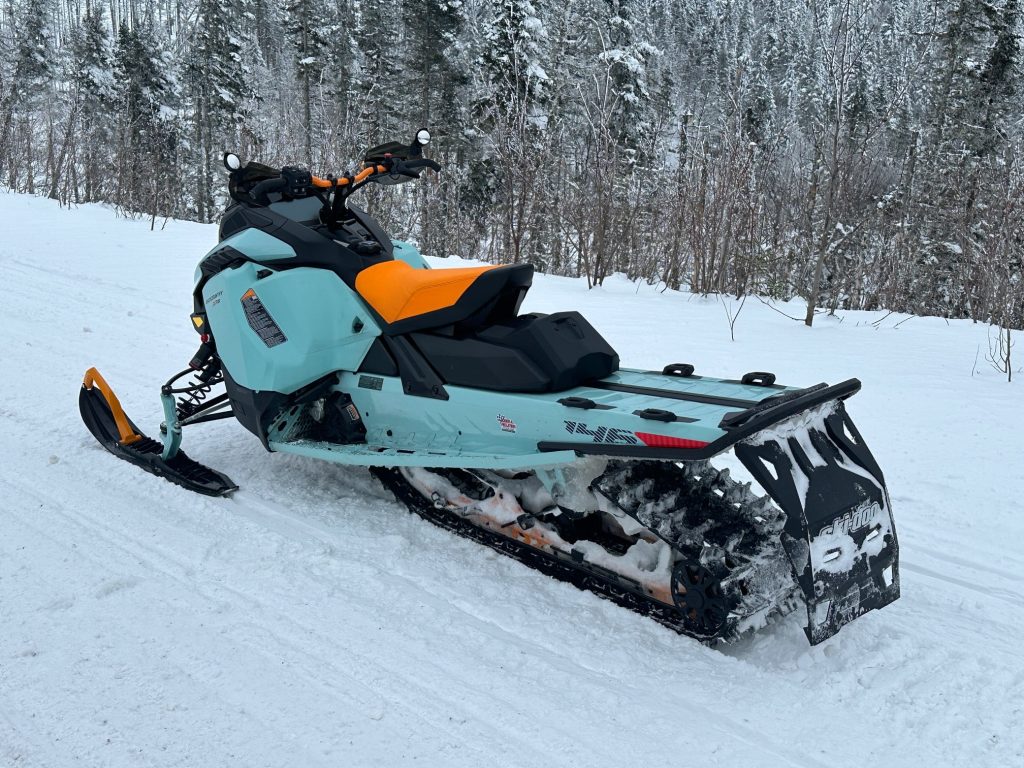
The Pragmatic Design of the 2024 Backcountry X-RS
I really appreciate the look of the 2024 Backcountry X-RS on the REV Gen5 platform. First of all, the panels have been redesigned to be narrower. Then, I particularly like the design of the headlights, especially now that they are LED. Next, the model I tested sported the “neo-mint” colour with orange accents in various places. It’s certainly a bold colour choice, but very successful, in my opinion. The overall finish of this snowmobile is, in my opinion, exceptional and could serve as an example to follow.
From a practical standpoint, the LED headlights are powerful and efficient. As expected, the narrower panels improve the view on each side of the vehicle. Moreover, they are easy to remove and reinstall. I also appreciate the relocation of the air intakes on the top of both sides of the hood instead of the front nose. This is, in my opinion, more practical, especially for a hybrid snowmobile. This way, snow has much less chance of entering the engine compartment.
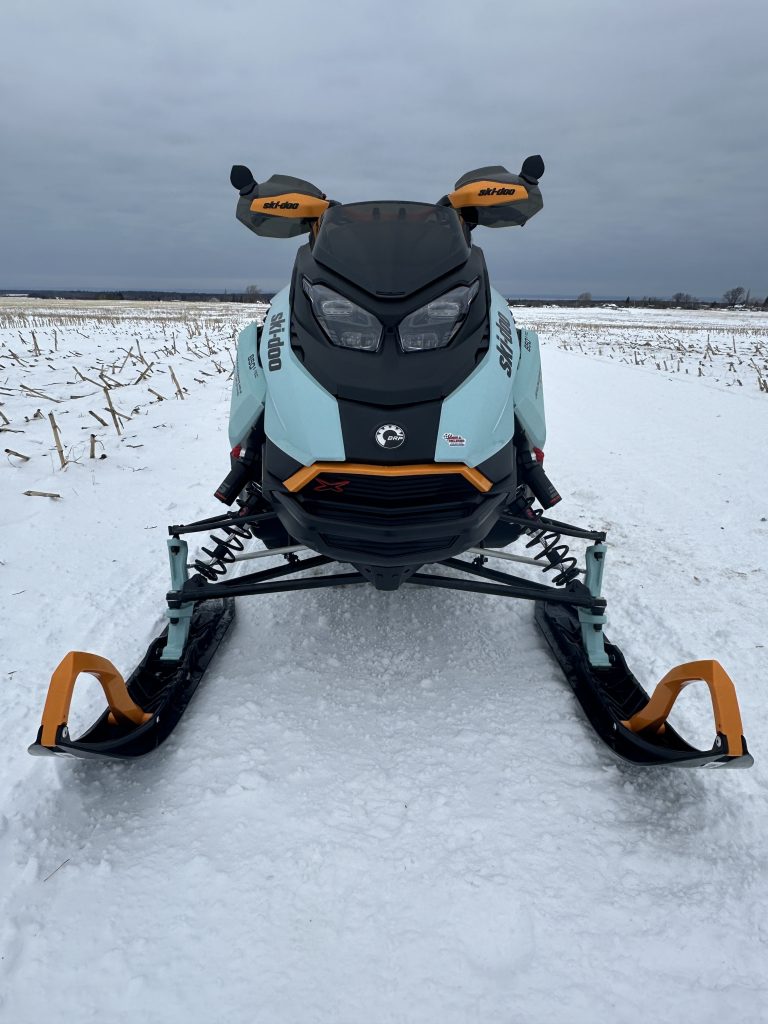
General Mechanics of the Vehicle
The 850 E-TEC engine is one of my favourites in the Ski-Doo lineup. I’ve had the chance to test this engine in several models, and it doesn’t disappoint in the 2024 Backcountry X-RS. I love its behaviour and performance. With its 165 HP, the vehicle sure is powerful! And the response is almost instantaneous. The behaviour of the CVT transmission is just as interesting on trails as it is off-trail. Not only does this mechanical combination work well, but it is also lightweight, making the snowmobile agile. Additionally, this engine has demonstrated good reliability over the years. It offers very reasonable oil and fuel consumption for a high-performance two-stroke engine.
I do commend the refinement that Ski-Doo has brought to its engine on the REV Gen5 platform. By adding a new engine mount, vibrations are significantly reduced. I noticed it as soon as the snowmobile started. But it doesn’t stop there! I’ve noticed much better insulation of the snowmobile than in the past. Although subtle, the insulating panels help reduce heat on the plastics and noise, without suffocating the pleasant sound of the engine.
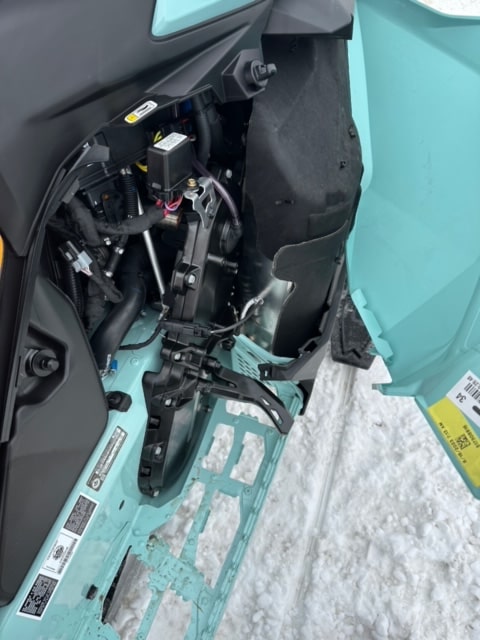
Adding this fourth engine mount should also have a beneficial long-term effect on the pulley system and the drive belt. The inner panel design also cools the latter much better in the REV Gen5 chassis.
Innovative Screen and Improved Ergonomics of the 2024 Backcountry X-RS
The 10.25-inch touchscreen integrated into the 2024 Backcountry X-RS is simply fantastic! It features Ski-Doo-themed colours (orange, yellow, and black). The biggest improvement of all is the layout of the interface control buttons on the handlebar. This allows navigating the system without really needing to take your eyes off the road. Its extremely simple use is very intuitive compared to the old scroll wheel.
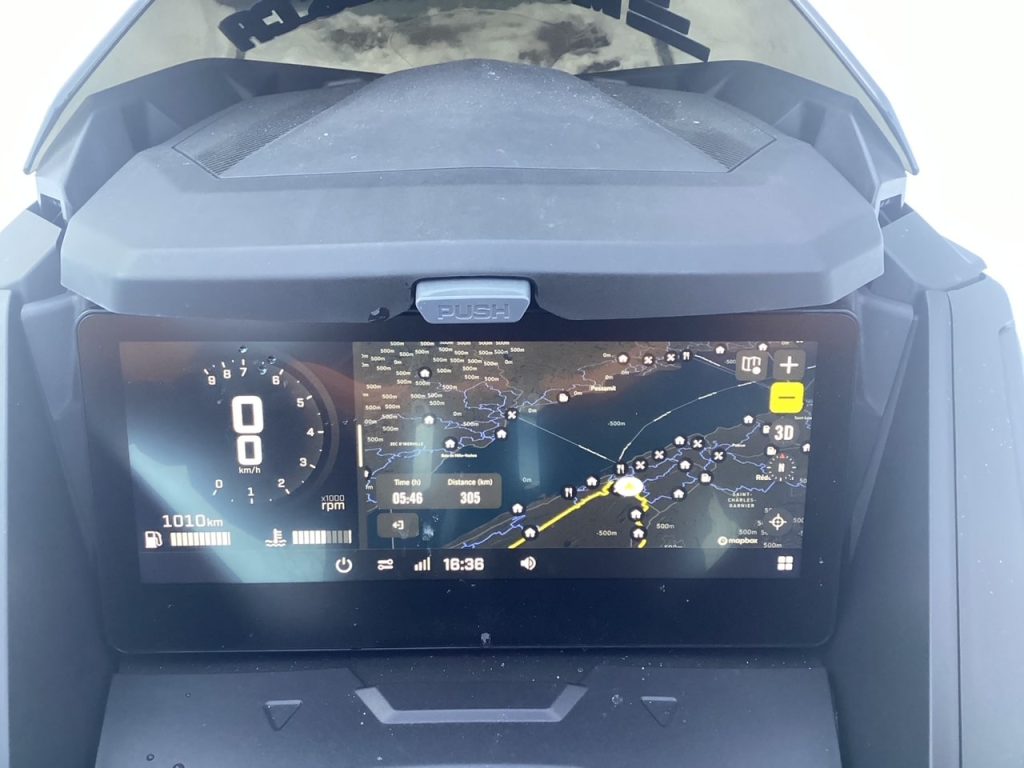
The riding position on the snowmobile is excellent. It remains similar to what it was in the past. The seat is comfortable without being too soft. The improved footrests allow for less snow accumulation. Thus, feet don’t slip as much as before. For 2024, we also note the addition of ice scratchers.
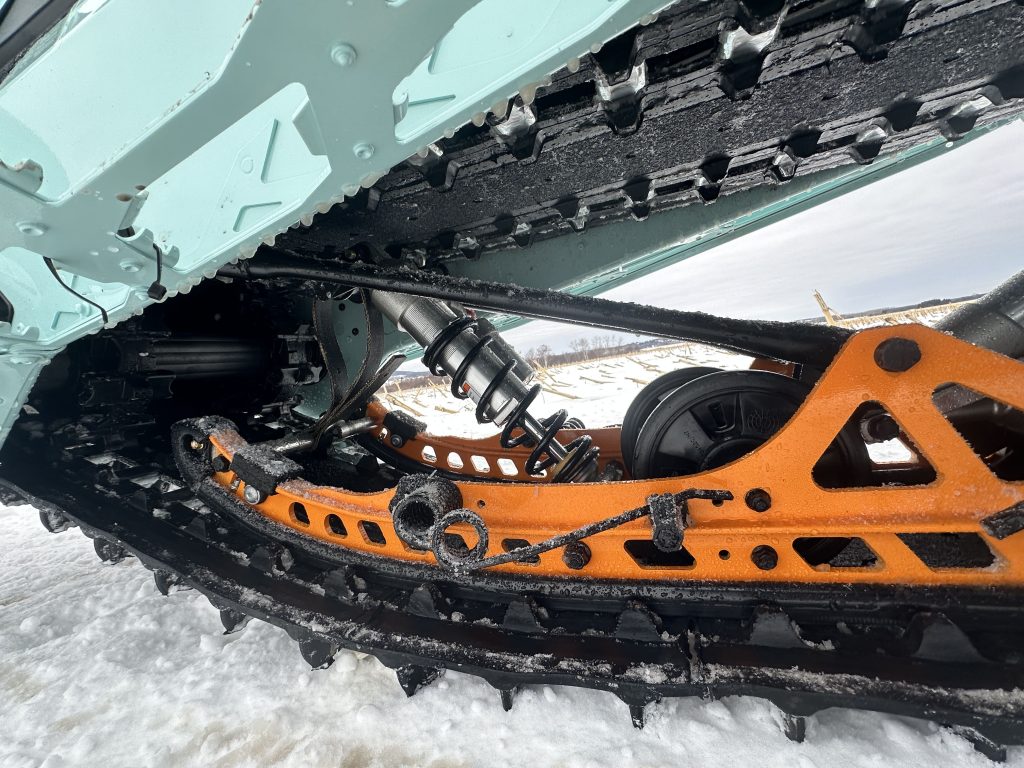
Trail Behaviour of the 2024 Backcountry X-RS
The steering and front suspension behaviour are better on the 2024 Backcountry X-RS. I observed much less darting and better stability than in the past. This is presumably thanks to the new steering spindle. However, it still has its limitations. I did lose some control over the front of the sled when temperatures were mild and the snow was soft. That being said, observed much less ski-lift effect compared to the previous version.
As for the rear suspension, the cMotion X makes all the difference.
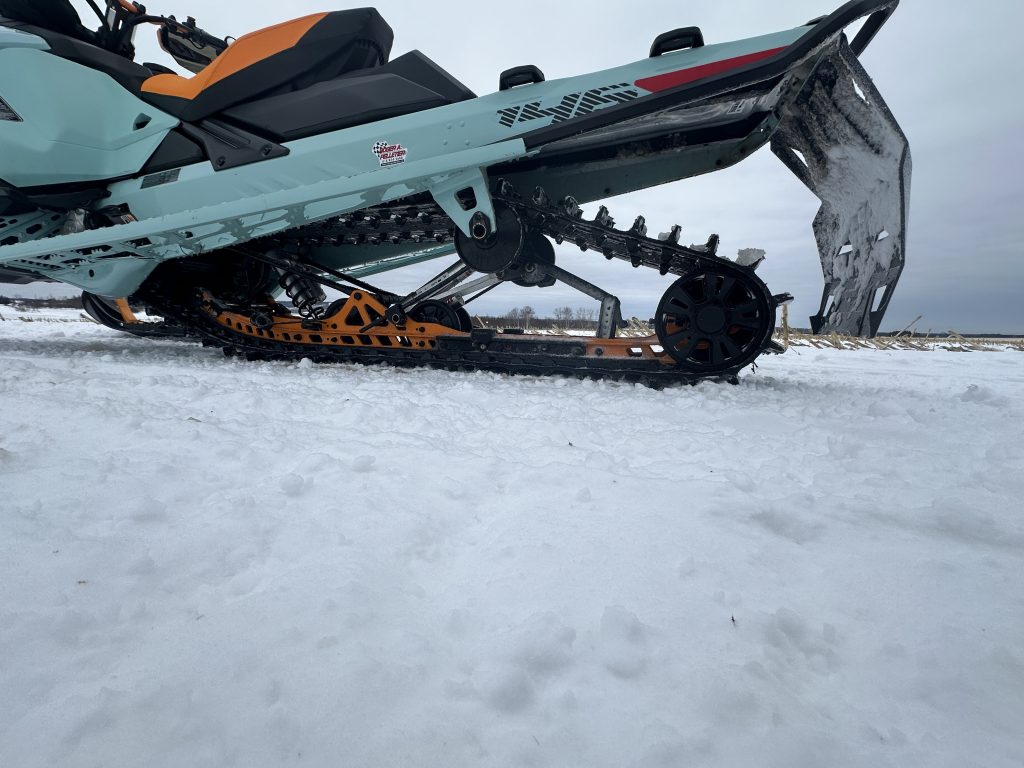
At first, I was surprised at how easily I could handle this snowmobile on the trails. I noticed much less transfer in the curves and quickly found that its behaviour was better on bumpy trails now. I could maintain a good control. Despite the lack of snow and grooming this year, I was able to stay on course through the bumps without letting off the throttle. Even with minimal adjustment of the KYB shocks, it was difficult to bottom out. Moreover, these shocks have three adjustments, they are easy to use, and offer good performance.
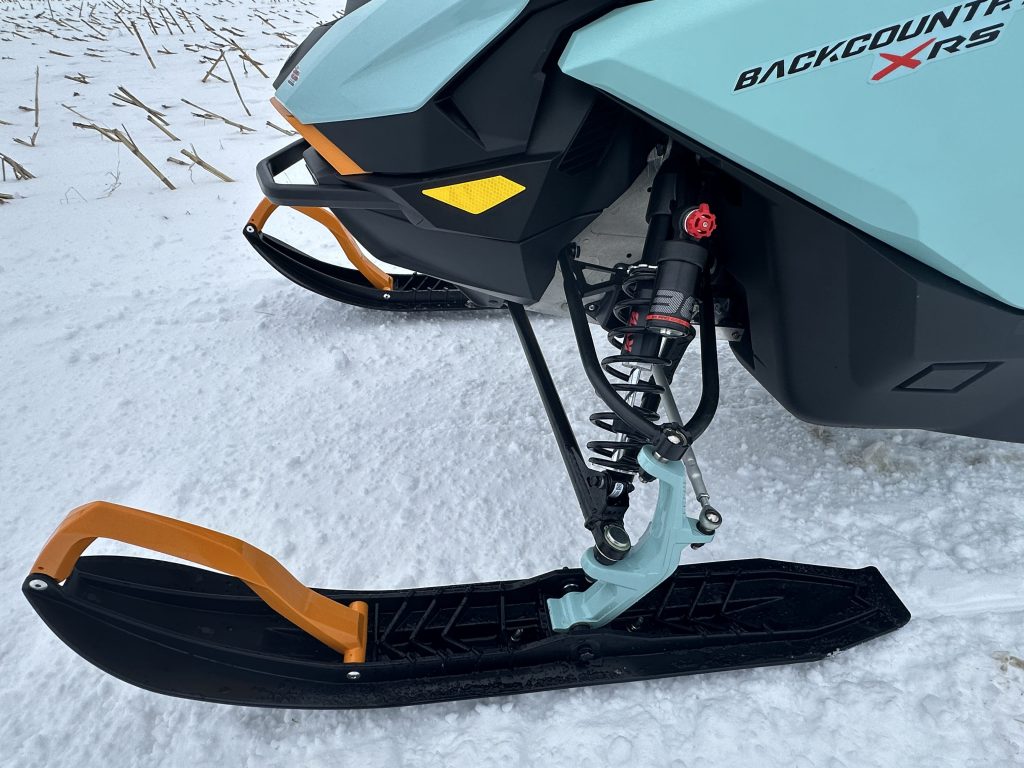
BRP claims that the 2024 Backcountry X-RS has a Snocross attitude. For the reasons listed above, I must agree with this assessment. It’s a significant improvement.
We’re Getting Closer to the MXZ X-RS.
Earlier this season, I rode an MXZ X-RS with an 850 E-TEC engine. I didn’t find that there was such a big difference between it and the 2024 Backcountry X-RS. Both snowmobiles were equipped with a similar studded track that favoured acceleration and braking on trails. The MXZ X-RS certainly performs better in curves; less ski lift and a shorter track. It will undoubtedly be more agile in the end. However, the Backcountry greatly surprised me. To such an extent that it didn’t really feel like a 146-inch hybrid snowmobile in my hands. To draw a parallel, the last time I had a similar feeling was with a Renegade I owned in 2012. Although it was a 137-inch model, I found that it performed as well as 121-inch snowmobiles. Today, the MXZ X-RS is available in a 137-inch version… that’s where we’re at now.
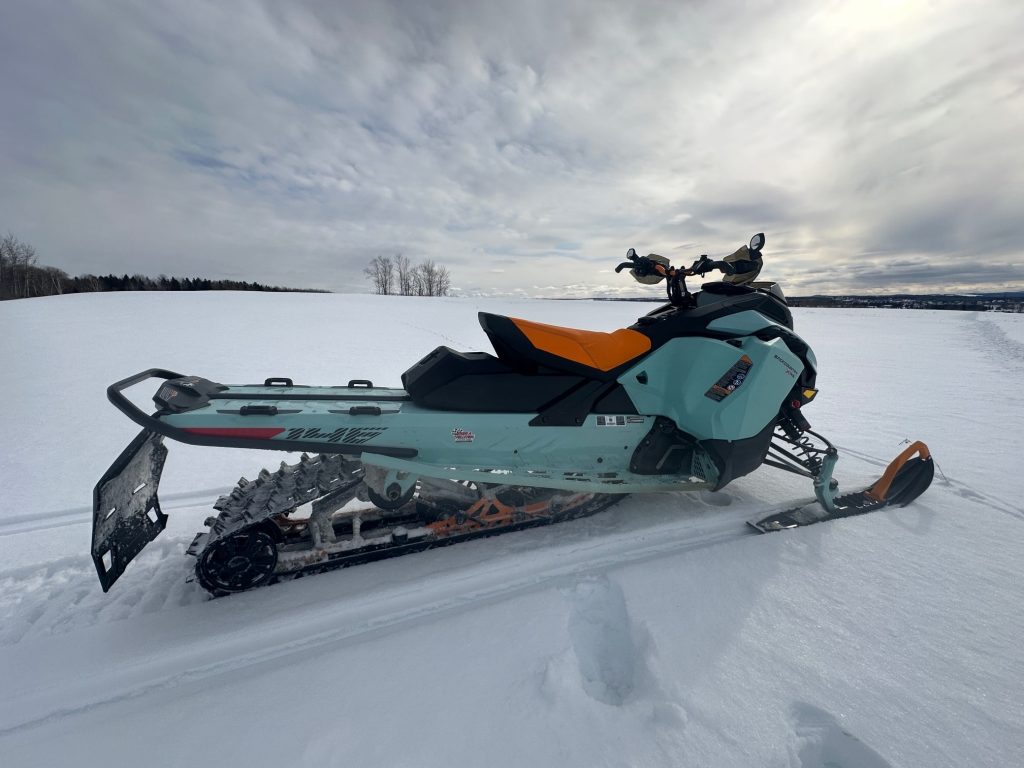
Off-Trail Performance of the 2024 Backcountry X-RS.
Although there wasn’t much snow this year, I managed to do some testing in slightly deeper snow. As soon as I hit the throttle, the snowmobile climbed on top of the snow. That’s very good. In this regard, I appreciate that the Backcountry lineup is exclusively available with a two-stroke engine. This reduces weight and makes it easier to control in the snow. I must say that I wished to have the same mechanics with a turbo like in the Ski-Doo mountain snowmobiles. I was very pleased to see its arrival for the 2025 models.
Since there is less transfer, it also seems to make a difference in off-trail behaviour, but it’s not major. Although the 1.6-inch studded track performs rather well in the snow (with its limits), it is significantly better and more suitable for accelerations on trails. Nevertheless, I would have preferred a two-inch minimum track and much more snow this winter to be able to test it thoroughly.
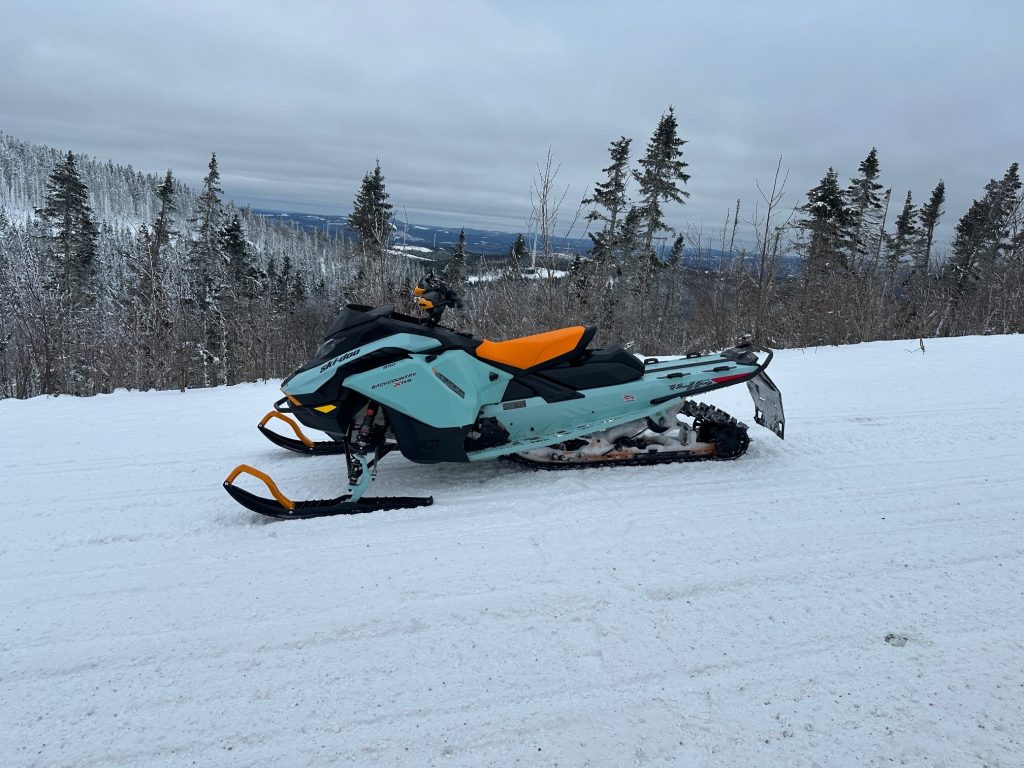
Desired Improvements:
- During various rides, I noticed the headlights fogging up under the REV Gen5 chassis. I suspect this is something that could easily be fixed.
- Like on older models, I would have liked to have a strap on the handlebar for off-trail riding. It was previously available on the Backcountry, and I would like to see it return.
- One thing that really surprised me is that the electric start model no longer has a cord to start the snowmobile. I feel like this is something that should never have been removed. However, with a SHOT model, which comes standard with one, I don’t understand why it’s not included for the entire lineup.
- My experience navigating with the BRP Go! mobile app is excellent! However, I must admit that I would prefer not to have to connect my phone to use the interface.
- The brake lever adjustment seemed to be a big innovation. In my case, I didn’t find it to be that remarkable. For a snowmobile of this price, and with our laws in Quebec, I would have preferred to have standard mirrors instead, for example.
- When I connected my phone via the USB port to activate the navigation interface and stored my phone in the small console pouch, I would often hit the snowmobile’s kill switch button by accident with my elbow. In this regard, it would have been more practical to have the zipper of the pouch and the USB port on the other side.
The 2024 Backcountry X-RS: A New Hybrid Standard?
In conclusion, I was greatly impressed by the performance of the 2024 Backcountry X-RS. It even exceeded my expectations by a large margin. It’s my biggest surprise in the hybrid segment since Polaris’ Axys platform. I would even go as far as to say that it’s probably one of my biggest surprises among all the snowmobiles I’ve ridden in recent years. I can now confidently state that this snowmobile is a true 50-50 hybrid.
Although the front suspension has been improved, I must say that I still have a preference for Polaris’ suspension. That being said, the 2024 Backcountry X-RS shows a clear improvement in all aspects. It has undoubtedly become a benchmark hybrid snowmobile, in my opinion. The engineers at BRP have not only succeeded in optimizing its performance, but also refined this snowmobile and made many changes to facilitate its maintenance. All these modifications should greatly improve the long-term reliability of this vehicle.
